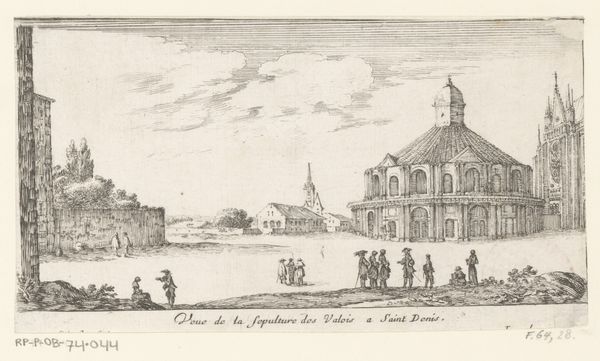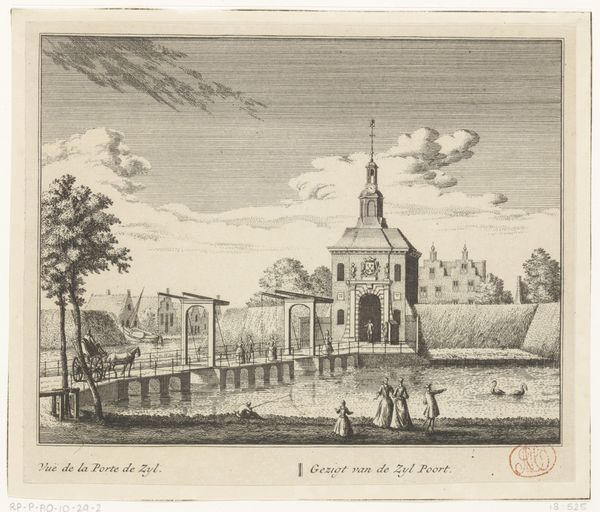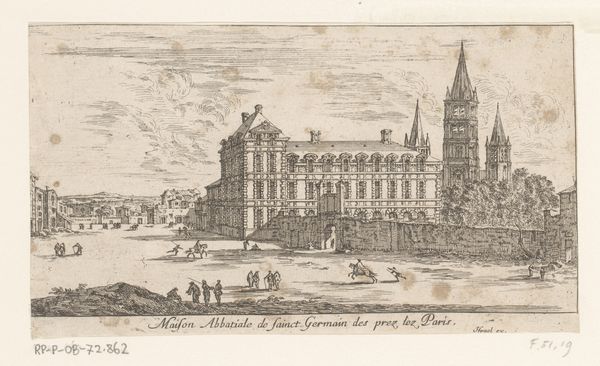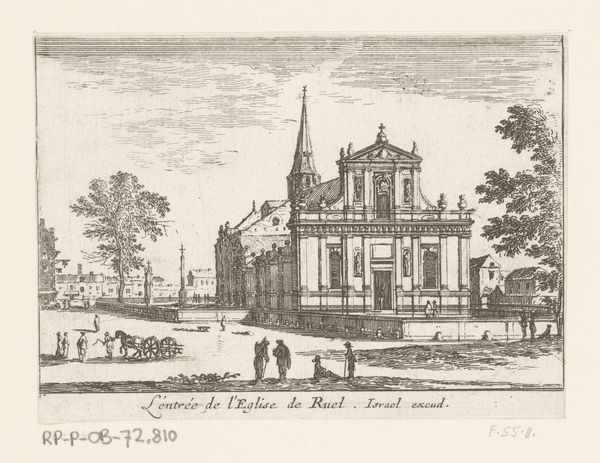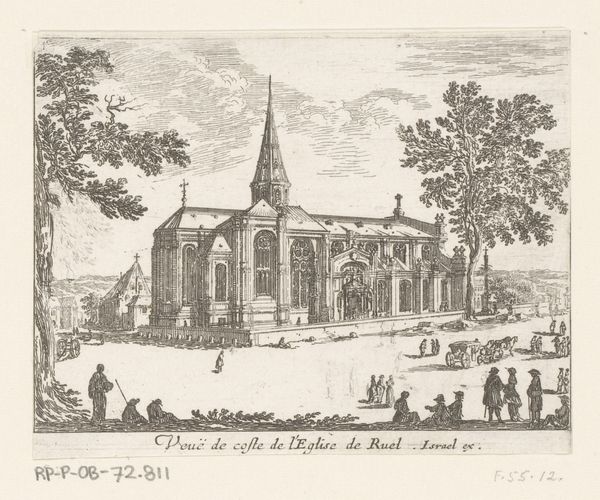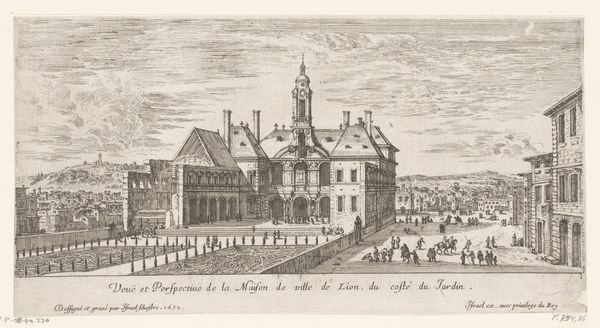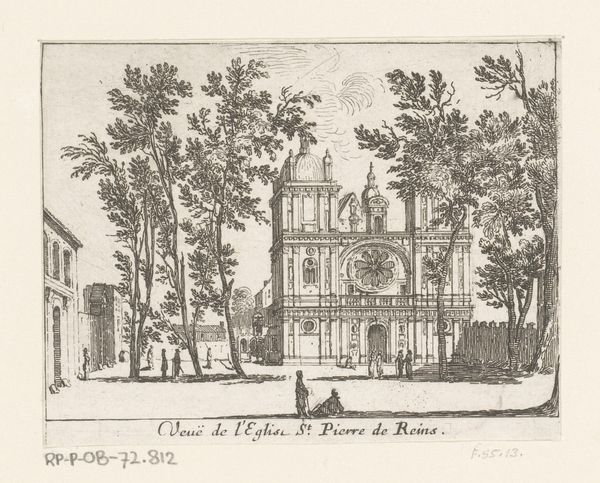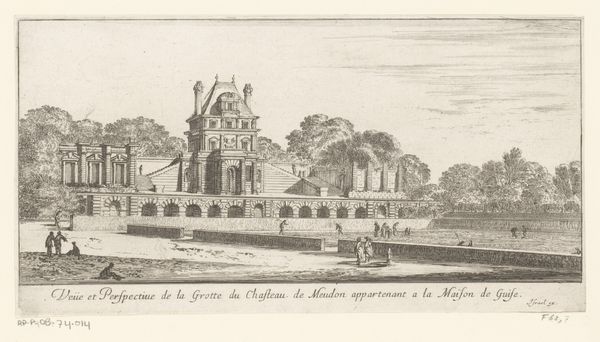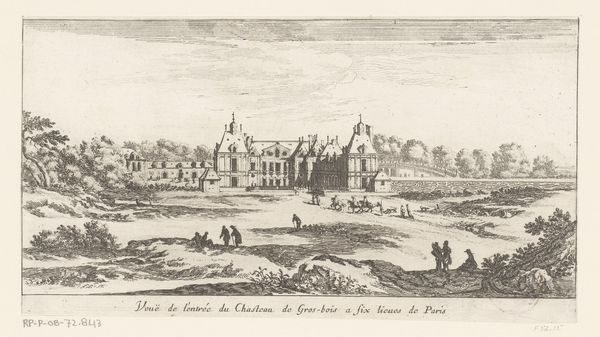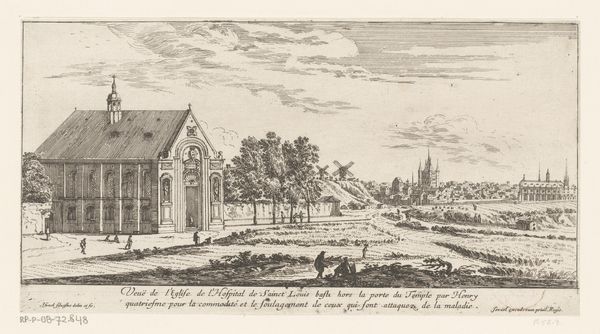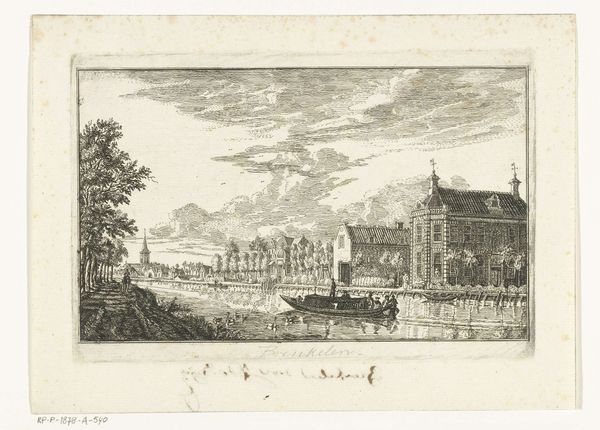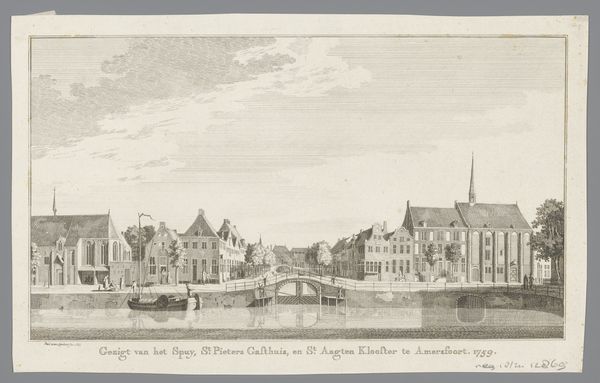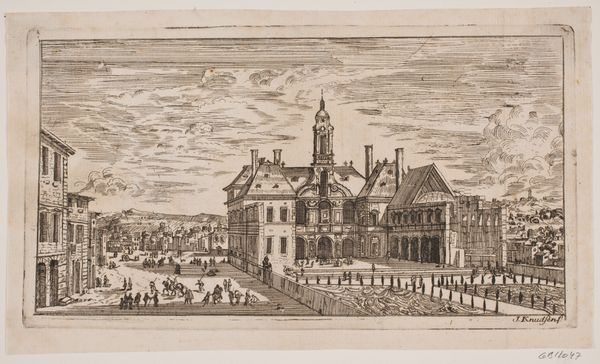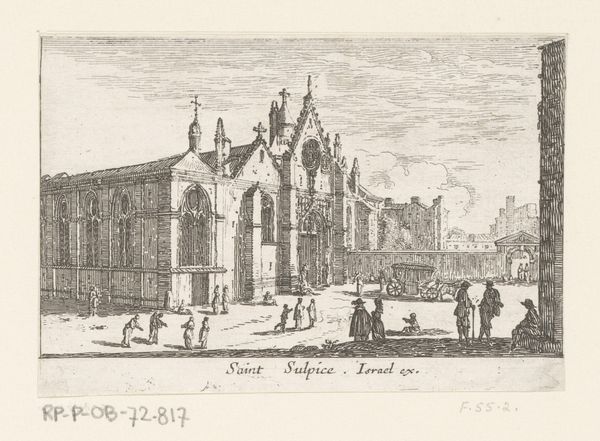
print, engraving, architecture
#
baroque
# print
#
line
#
cityscape
#
engraving
#
architecture
Dimensions: height 112 mm, width 198 mm
Copyright: Rijks Museum: Open Domain
Curator: Today, we’re looking at "View of the Church of Saint-Bernard," an engraving made around 1657 by Israel Silvestre. Editor: It has such a detached and almost sterile feeling, doesn't it? Despite the detailed linework, the overall tone feels very precise, and… almost aloof, for lack of a better word. Curator: Well, consider the function of prints like this at the time. Silvestre was part of a workshop that mass-produced these cityscapes. The process would involve an engraver meticulously carving lines into a metal plate. Editor: It is all so meticulous! Look at how the individual tiles of the roofs have been rendered using carefully placed thin engraved lines and dots to mimic the textures, all evoking a sense of precision and attention to detail in its production. This meticulousness underscores its iconic depiction. Curator: Precisely. Prints were widely circulated and, consequently, available, facilitating the consumption and understanding of architectural spaces. By depicting specific buildings, like this church, engravers participated in shaping an understanding and even appreciation of these architectural forms. Editor: So it’s both about religious space and urban representation, then, considering churches during this era are symbols of divine authority as well as community stability? I am especially drawn to the building’s position within the city, a clear emblem of baroque prominence with an almost illustrative didactic character that speaks to faith and collective urban identity. Curator: Yes, it certainly embodies both. Silvestre's engravings demonstrate how artistic skills could be deployed in shaping contemporary material culture. By studying this print, one can learn more about how the image was used and consumed as part of the burgeoning print market in the 17th century. Editor: I think for me the key thing about it is the way it encapsulates and freezes a specific time, distilling the building’s symbolic essence and allowing that to be perpetuated indefinitely, across both time and space. Curator: Indeed. And how interesting to examine those intentions and conditions. Editor: Exactly! The combination of visual storytelling, social history, and technique just breathes the aura of this church to those who see it centuries later.
Comments
No comments
Be the first to comment and join the conversation on the ultimate creative platform.
